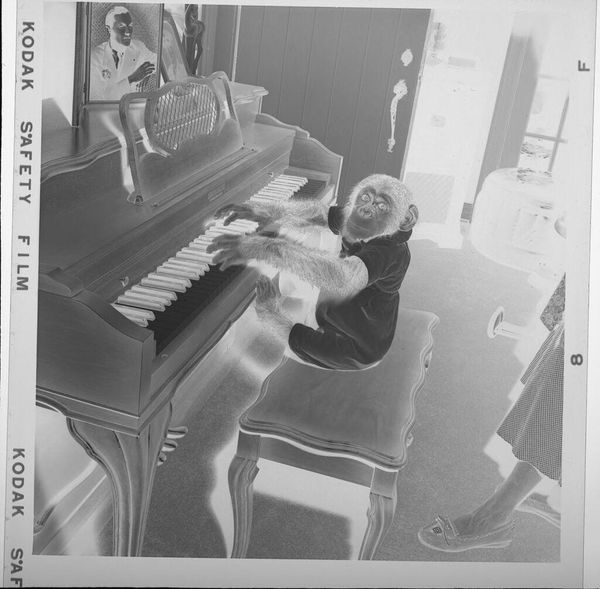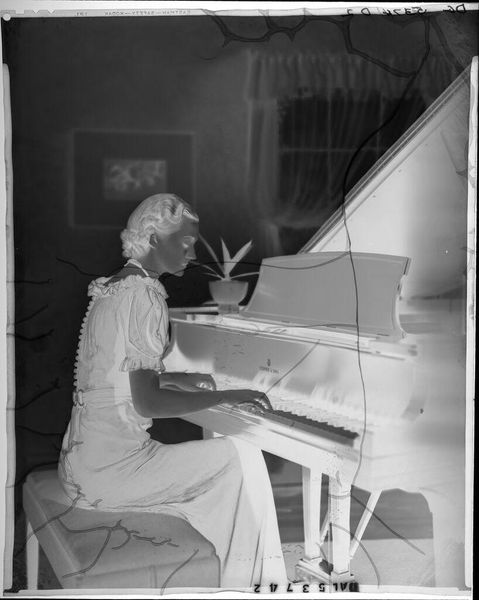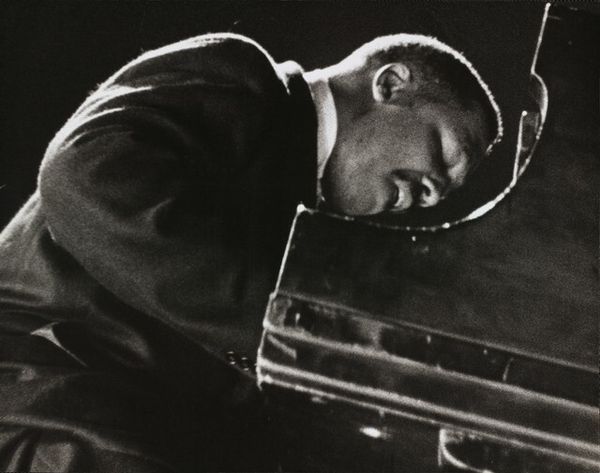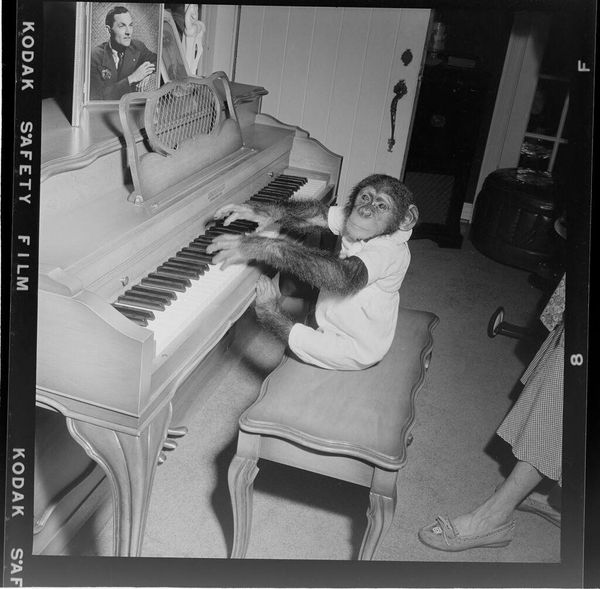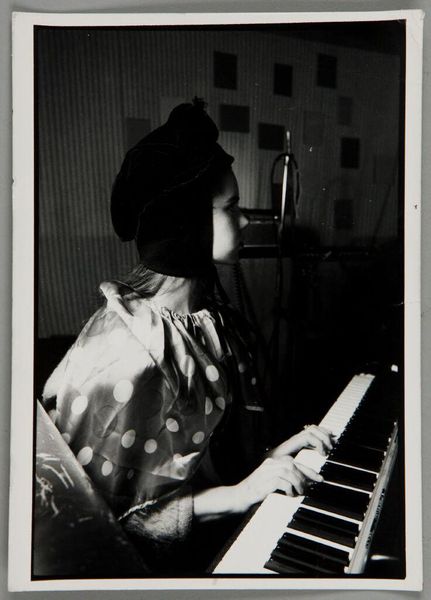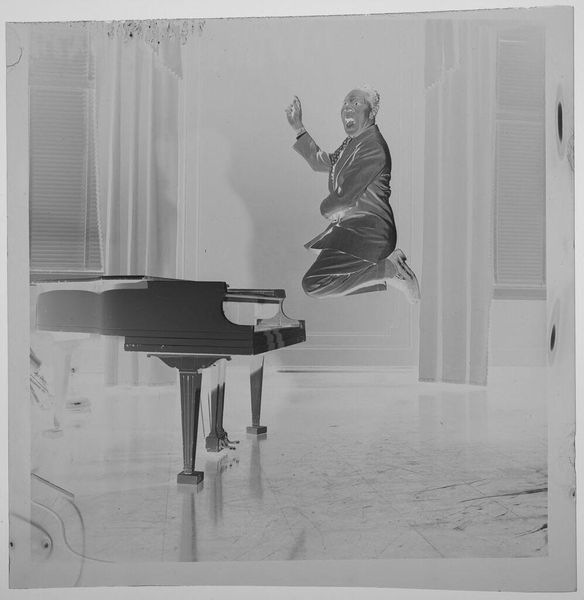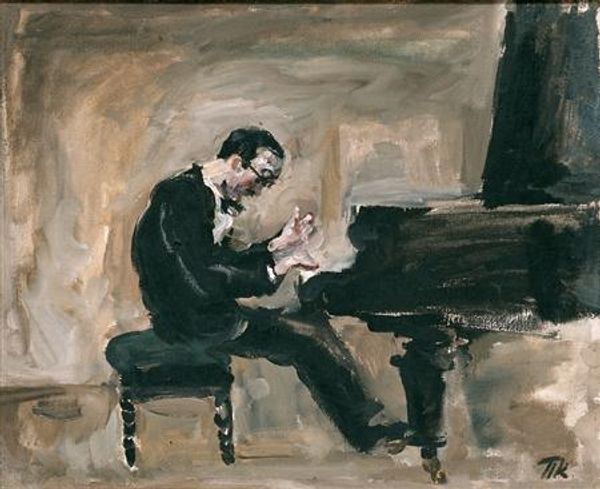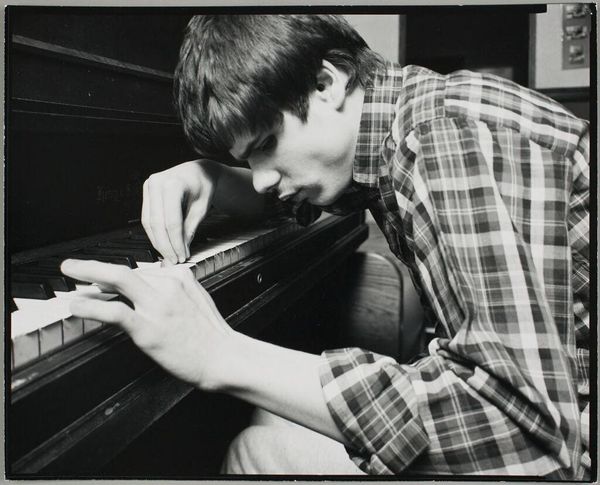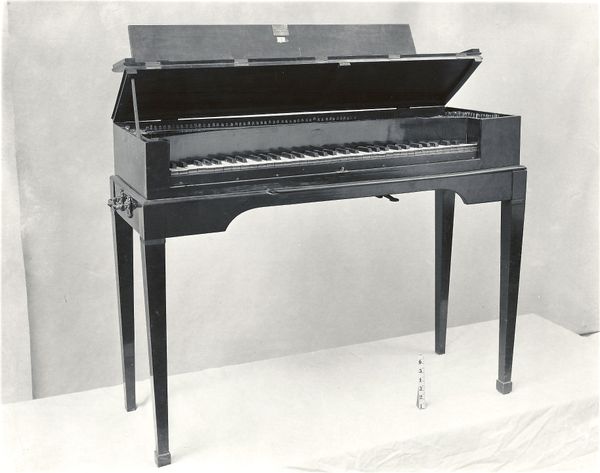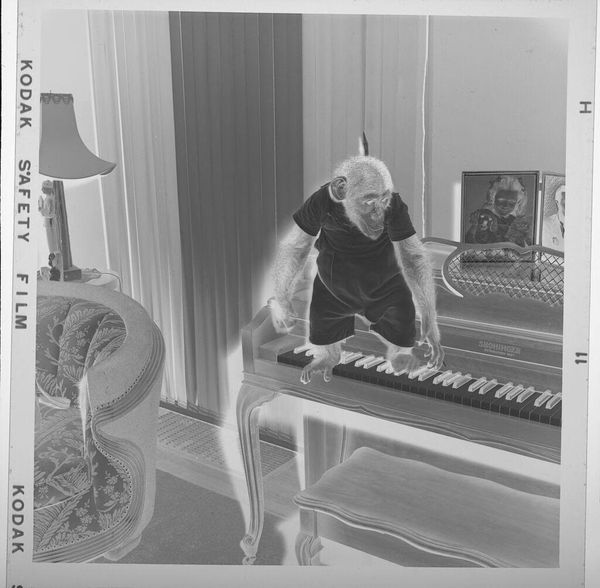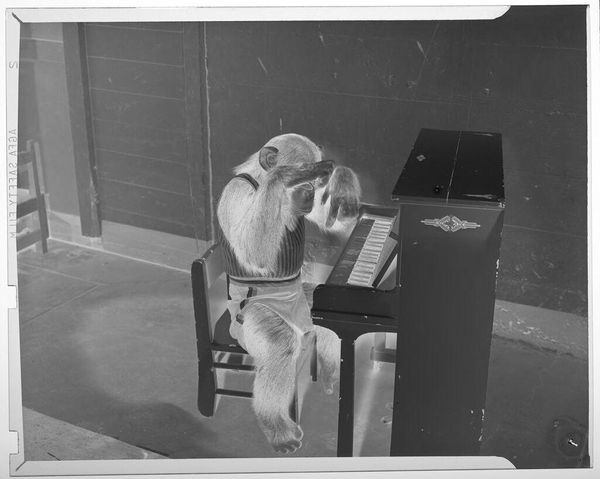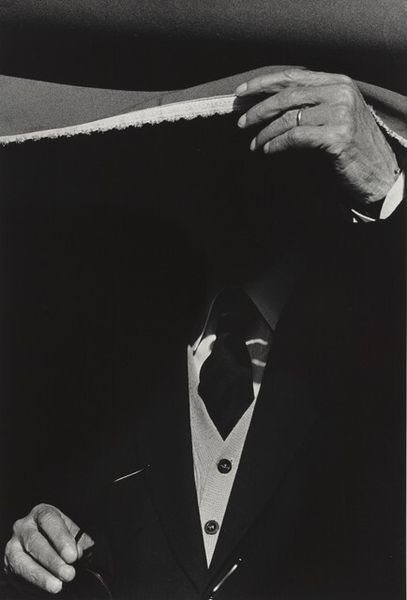
photography, gelatin-silver-print
#
portrait
#
black and white photography
#
archive photography
#
photography
#
historical photography
#
black and white
#
gelatin-silver-print
#
monochrome photography
#
monochrome
#
modernism
#
monochrome
Dimensions: sheet: 50.5 × 40.8 cm (19 7/8 × 16 1/16 in.) image: 37.9 × 37.5 cm (14 15/16 × 14 3/4 in.)
Copyright: National Gallery of Art: CC0 1.0
Editor: So, this is Gordon Parks' gelatin-silver print, "Leon Kirchner, New York," created sometime after 1955. The stark black and white gives it a really intense, almost somber mood. What do you make of the composition? Curator: Observe how the piano dominates the visual space, its angular form creating strong diagonal lines. These lines converge, drawing the eye toward the subject's face. Consider the contrast—the dark piano against the lighter backdrop, Kirchner’s face illuminated, his hands a resting point in the visual arrangement. Editor: That contrast definitely creates a focal point. So you're saying it's the structure and light that give it meaning, rather than any kind of symbolism? Curator: Precisely. Focus on the photographer’s calculated manipulation of light and shadow. Parks doesn’t just record a scene; he constructs a visual experience. Notice the textures—the smoothness of the piano versus the rougher texture of Kirchner’s cardigan. Editor: That’s a great point, I see that now. So the composition and textures tell the story here. What's most important is how he used his materials? Curator: Yes, the formal relationships take precedence. What is expressed is embodied by Parks’ selection of this specific photographic medium and the structural decisions of composition, light, and texture. Editor: This really changes how I look at the piece. I was so caught up in thinking about the historical context. Curator: Often, when the elements align, it encourages a dialogue to understand meaning derived solely from intrinsic qualities of the work. It can be useful for building our understanding of the artist and their environment too.
Comments
No comments
Be the first to comment and join the conversation on the ultimate creative platform.
